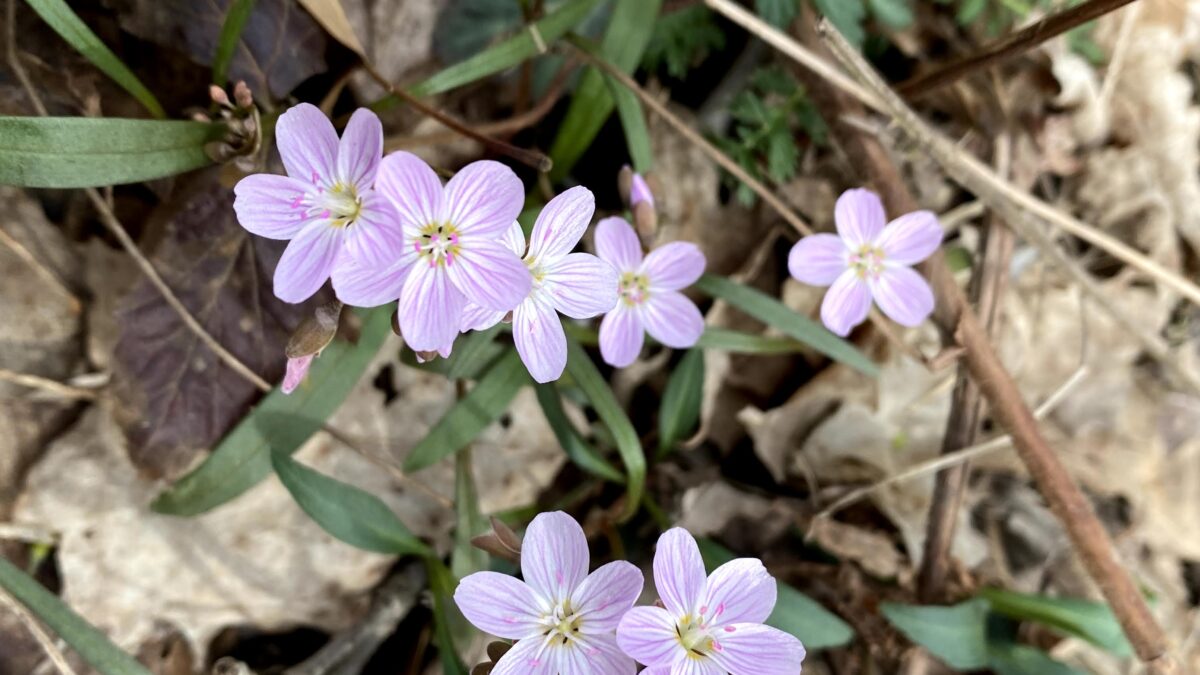
Let’s Talk About Lesser Celandine
January 9, 2024
Floristic Quality Assessments
January 11, 2024By: Jenny Adkins
April 12, 2021
Today, we highlight the dainty and captivating Spring Beauty (Claytonia virginica).
This common wildflower is one of the first to bloom in the spring, bringing a cheerful presence to the forest floor. It blooms throughout the spring, opening towards the sky on sunny days and closing to a nod on dreary days. Native bees, flies, ants, and Lepidoptera frequent Spring Beauty as a source of pollen and nectar.
It grows throughout central and eastern North American dry-mesic woodlands where it thrives on nutrients from leaflitter and can complete its life cycle before trees leaf out and prohibit sunlight from reaching the forest floor. It spreads by seed and corm, which are hard, bulb-like storage reserves that sprout new stems.
Interestingly, we looked into the variation in petal color (dark pink to light pink, to white) and found a great post from the In Defense of Plants blog, summarizing the work of Dr. Frank Frey at Colgate University. Essentially, the white variants are passed over by herbivores (good), but less frequently visited by pollinators (bad). On one hand, you’re not eaten and have another year to attempt seed production. On the other, you’re not putting your all into a good seed yield this year and your chance of reproductive success is low. The variants with more pink coloration (pigment compound cyanidin) are more attractive to pollinators and generally produce more viable seed. Amazingly, if there are neighboring populations of white flowered plants, the Spring Beauty is more likely to be pink due to competition for pollinators. Fascinating, right?!











